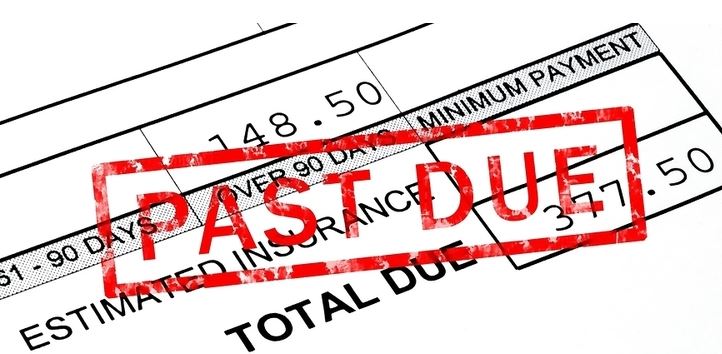
What to Do When a Customer Does Not Pay
By: Halsey Filbin, former Captain in the US Army and current co-founder of USEFUZE- a free mobile app designed for small businesses to grow and manage their business or side-hustle. To learn more about USEFUZE, check out https://zgn7w.app.link/TFXiKSsI7qb
There are many potential reasons why a customer may not pay their invoice on time. As a business owner, it is important to understand the reasons behind non-payment, so that you can take steps to mitigate the risk of future non-payment. By understanding the root causes of why customers don’t pay, you can put systems and processes in place to help reduce the chances of it happening again.
Some common reasons for non-payment include:
- The customer is unhappy with the product or service they received
- The customer is experiencing financial difficulties
- The invoice was sent to the wrong address
- The customer was not aware they were supposed to pay the invoice
- The invoice was lost in the customer’s paperwork
- The customer did not receive the invoice
Whatever the reason for non-payment, it is important to take action quickly to try and recover the outstanding amount. The longer you wait, the harder it will be to get paid. There are a few options available to you for collecting payment, including sending reminders, using a collection agency, or taking legal action. Understanding why customers don’t pay will help you choose the right course
What should you do if a customer doesn’t pay?
If you’ve provided a product or service to a customer and they haven’t paid, you may be wondering what your next steps should be. While it’s not an ideal situation, there are a few things you can do to try to recoup your losses.
First, reach out to the customer and try to resolve the issue amicably. It could be that there was a misunderstanding or they simply forgot to pay. If you can come to an agreement, great! If not, you may need to take more drastic measures.
If the customer still refuses to pay, you can send them a formal demand letter. This should outline what the outstanding balance is and what actions you’ll take if it’s not paid within a certain timeframe. If this still doesn’t work, you may need to take them to court or hire a collections agency.
No one likes dealing with delinquent customers, but by taking swift and appropriate action, you can hopefully get the money that’s owed to you.
How do you contact a customer who has an overdue balance?
There are a few options when it comes to contacting customers who have an overdue balance. You can send them a letter, an email, or even give them a call.
If you’re not sure how to go about it, consider hiring a collections agency. They can help you get the money that’s owed to you.
Take the conversation offline with a phone call.
If a customer doesn’t pay, the best thing to do is to take the conversation offline with a phone call. This way, you can talk to the customer directly and work out a payment plan that works for both of you. You may also want to consider sending a reminder email or letter before making the call.
Send a letter or email asking for payment.
If a customer does not pay, the first step is to send a letter or email requesting payment. Be sure to include the amount owed, the date the bill was due, and any consequences for late payment. You may also want to give the customer a chance to dispute the charges. If you don’t receive payment within a reasonable time, you may need to take legal action.
What to do when talking to the customer on the phone or in person.
It can be very difficult to confront a customer about an outstanding bill, but it is important to do so in a calm and professional manner. First, make sure that you have all of the facts straight and that the customer actually owes the money. Once you are confident about this, reach out to the customer and explain the situation. Be polite but firm and offer options for repayment. If the customer is uncooperative or unwilling to pay, you may need to take further action such as contacting a collections agency.
How to document communication with the customer
If a customer does not pay, the first step is to document all communication with the customer. This will help you keep track of what was said and when, as well as any promises that were made. It can be helpful to include date and time stamps on your documentation. You may also want to take screenshots or save email conversations.
If you have been trying to contact the customer and have not been able to get in touch, you may need to take additional steps. These could include sending a certified letter or hiring a collection agency.
No matter what steps you take, it is important to keep good records of your communication and efforts to collect payment. This will give you the best chance of getting paid and will also protect you if the matter ends up in court.
Conclusion
Anybody that owns a small business will eventually have a customer that will not pay for your completed work. The most important thing is to act quickly and be persistent and make sure that you document all attempts to reach them for payment.
There are tons of services out there to help you grow your business and manage your day-to-day operations. You need to make sure you pick the one that works for you and your needs. USEFUZE is a free service that is perfect for small businesses and does not overwhelm you with needless features. With USEFUZE you create your own profile, complete with pictures of your work and ratings from past customers that you can share with anyone as a digital business card. You can also create and instantly send professional and branded estimates and invoices to your customers and manage your pending and ongoing projects, all in one free app. To learn more, check out https://zgn7w.app.link/TFXiKSsI7qb

